I’ve previously reviewed Weibu’s N10 mini PC, however, they have now extended the range of CPUs available to the N10 through the addition of Alder Lake-N processors. As a reminder, Weibu is a B2B company that offers total solutions and OEM/ODM services and they don’t sell directly to end users as their target clients are computer manufacturers like Acer and Hisense. Weibu have sent a pre-production sample of their latest N10 based on a Core i3-N305 Alder Lake N-Series processor to showcase its capabilities in this review. I will revisit the specification of the N10 and briefly look at the performance running both Windows 11 Pro and Ubuntu 22.04.
Weibu N10 product specifications
Weibu list the N10 specifications on their website as:
However this probably needs qualifying as ‘Memory Capacity’ states ‘2*SO-DIMM’ which is correct for many processors, but Intel’s Core i3-N305 processor in the mini PC sample I received only supports a single memory channel:
So the motherboard has been modified accordingly:
whilst keeping the ports in the same positions as before which are a key selling feature of this mini PC making it suitable for commercial/industrial usage.
The rest of the specifications are aligned to the physical device with the exception of the front USB 2.0 ports (see below):
Product overview
Overview of hardware
The N10 is an actively cooled mini PC measuring 145 x 128 x 54mm (5.71 x 5.04 x 2.13 inches) with an aluminum top that extends over the front and back to form the case which is then completed with two plastic sides and bottom. The CPUs that are supported include Intel’s Coffee Lake and Comet Lake processors and now Alder Lake. The review sample included an Alder Lake-N Core i3-N305 which is an eight-core 8-thread (no HyperThreading) 3.80 GHz Core mobile processor (no Turbo) with Intel’s UHD Graphics.
The front panel has a power button, dual USB 3.0 ports, dual USB 2.0 ports, a reset pin-hole for the UEFI (BIOS), dual COM ports (which are optional), a Type-C USB port, both a 3.5mm microphone and a 3.5mm headphone jack and a micro-SD card slot. The rear panel includes the power jack, dual gigabit Ethernet ports, either a VGA port (as in the case of the review sample) or a DisplayPort 2.0, an HDMI 1.4 port, dual USB 2.0 ports, and a Kensington security slot. Internally, there is an M.2 2230 WiFi 5 (or 802.11ac) Intel AC7265 card, and an M.2 NVMe (‘M’ key) PCIe Gen 3.0 SSD drive (the review sample included a 512GB Netac M.2 2280 drive). There is also the ability to add a 2.5” SATA drive to the top of the case which is then connected to the motherboard via a conventional SATA cable and a separate power cable. If the N10 is configured with the dual COM ports, they are connected to the motherboard by ribbon cables. Finally, there is a single SODIMM memory slot and the review sample included a stick of UnilC 8 GB DDR4 3200 MHz memory. Also included was a 60 W (12.0 V 5.0 A) power adapter and cord.
Overview of software
The Weibu N10 came pre-installed with a licensed copy of Windows 11 Pro version 21H2 build 22000.194 which Weibu kindly installed to assist with the review. I was able to upgrade it to the latest 22H2 build 22621.1344 for testing purposes:
I also shrank the Windows partition in half to create a new partition into which I installed Ubuntu as dual boot using an Ubuntu 22.04.2 ISO and applied all available updates:
Key observations
A quick look at the base hardware information shows it is aligned with the specification:
The processor’s ‘Power Limits’ (PL) are configured. For Windows ‘PL1’ and for Ubuntu, under ‘Constraint 0’ they are set to 15 watts. For Windows ‘PL2’ and for Ubuntu, under ‘Constraint 1’ they are set to 35 watts:
The memory is configured to run at its maximum speed of 3200MHz:
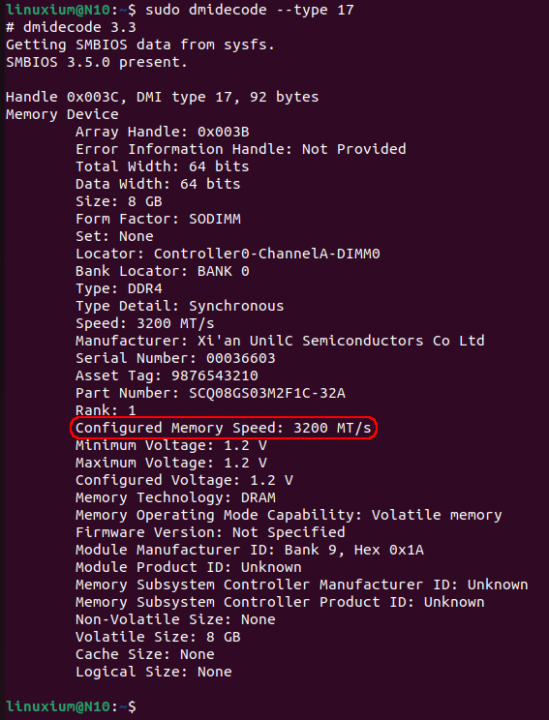
The dual gigabit Ethernet ports use Realtek RTL8168 network interface controllers and the WiFi 5 (802.11ac) is provided by an Intel Wireless-AC 7265 M.2 2230 card which also provides support for Bluetooth 5.2:
The specifications list all of the Type-A USB ports on the front as USB 3.0 so I tested them using a Samsung 980 PRO PCle 4.0 NVMe M.2 SSD housed in a ‘USB to M.2 NVMe adapter’ (ORICO M2PAC3-G20 M.2 NVMe SSD Enclosure) which showed that the front ‘blue’ USB ports were actually USB 3.2 Gen 2×1 i.e. 10 Gbit/s so within specification:
I then tested the front ‘black’ USB ports which were, as the color indicated, USB 2.0 ports and not USB 3.0 as stated in the specification:
I also tested the rear ‘black’ USB port which, as per the specification, was a USB 2.0 port:
Finally, I tested the front Type-C USB port which was only a USB 2.0 without ‘video output’:
In Ubuntu the USB ports enumerate as follows:
A brief check showed working audio, Wi-Fi, Bluetooth, and Ethernet in both Windows and Ubuntu. However, the microSD card reader was not connected and so could not be tested. This together with the front Type-C port not supporting video is likely due to the sample being pre-production.
When booting Ubuntu there are a couple of error messages being reported in the ‘dmesg’ although the significance of which has not been determined:
Windows 11 Performance on Weibu N10 Core i3-N305 mini PC
I first set the power mode to ‘High performance’ and ran some well-known benchmarking tools to look at performance under Windows.
Storage performance from the M.2 NVMe was:
The overall Windows performance was:
with CPU performance measured as:
and iGPU performance measured as:
For real-world testing of the iGPU, I played various videos in Edge and there were no issues encountered playing videos up to 4K 60 FPS:
Ubuntu 22.04 performance with Weibu N10 Core i3-N305 mini PC
I first set the CPU Scaling Governor to ‘performance’ and ran some of my Linux benchmarks:
Storage performance from the M.2 NVMe was:
The overall Ubuntu performance was:
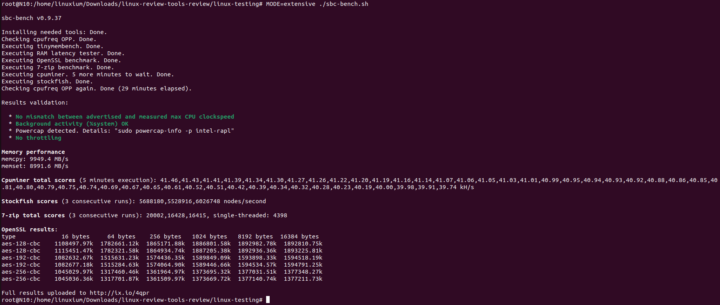
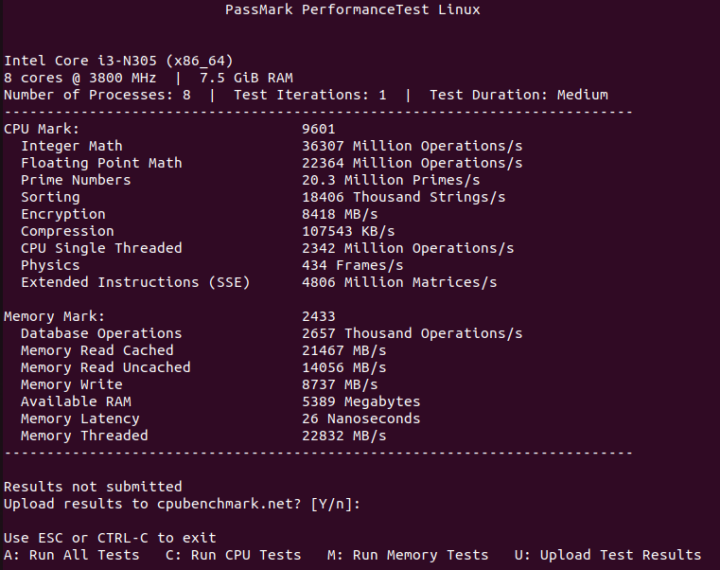
with CPU performance measured as:
and iGPU performance measured as:
For real-world testing of the iGPU, I played various videos in Firefox. Initially, I thought there were no issues playing videos up to 4K 60 FPS:
however when I let the 4K60fps video play a little longer suddenly CPU usage increased dramatically and resulted in frames dropping:
Decreasing the resolution to 1440p prevented the high CPU usage although the occasional frame was still dropped;
Network Performance (Ethernet and WiFi)
Network connectivity throughput was measured using ‘iperf3’. The gigabit Ethernet ports performed as expected at around 948 Mb/s in Windows:
and at around 941 in Ubuntu:
WiFi performance overall wasn’t particularly impressive although it was as expected. The 2.4 GHz band saw Ubuntu outperforming Windows where download averaged 94.5 Mb/s in Windows and 97.0 Mb/s in Ubuntu. Upload averaged 78.8 Mb/s in Windows and 92.9 Mb/s in Ubuntu. For the 5 GHz band Windows was faster than Ubuntu. For download, Windows averaged 241 Mb/s and for Ubuntu, it was 232 Mb/s. Upload in Windows averaged 234 Mb/s but only 185 Mb/s in Ubuntu.
Thermal Performance
Running a stress test in Ubuntu saw the CPU temperature rise to 81°C during ‘PL1’ where it maintained an average frequency of 3000 MHz. The temperature then dropped to 67°C as a result of the frequency throttling to 2400 MHz before gradually rising to an average of 72°C at 2466 MHz for the rest of the test:
A similar maximum temperature was seen when running Fire Strike in Windows:
Interestingly a higher maximum temperature of 88°C was seen for ‘PL1’ when running Cinebench R20 in Windows:
and when running OpenSSL from sbc-bench in Ubuntu:
However, this is still within the CPU’s specification and therefore not an issue.
The Weibu N10 Core i3-N305 mini PC uses active cooling and underneath the motherboard above the bottom of the device is a large fan that is not really audible during normal use, measuring 37.9 dBA on my sound meter next to the device when idle. During peak loads, it does get louder and in Windows, it reached nearly 48 dBA at times, and in Ubuntu nearly 45 dBA. During testing the maximum temperature I recorded on the top of the device was around 36.4°C in an ambient room temperature of 26.1°C.
Power consumption
Power consumption was measured as follows:
- Powered off (shutdown) – 0.6 Watts
- UEFI (BIOS) – 12.7 Watts
- Idle – 12.5 Watts (Windows) and 10.1 Watts (Ubuntu)
- CPU stressed* – 41.5 Watts peak 26.5 Watts avg (Windows ‘Cinebench’) and 34.8 Watts peak 25.2 Watts avg (Ubuntu ‘stress’)
- Video playback* – 20.6 Watts (Windows Edge 4K60fps) and 22.1 Watts (Ubuntu Firefox 1440p60fps)
*The power figures fluctuate in part due to the fan so the value is the average of the median high and median low power readings.
Summary
The original N10 already had a good range of ports suitable for commercial/industrial usage scenarios, so extending the range of CPU choices to include Alder Lake will certainly widen its appeal. As seen in this review, the mobile Core i3-N305 performance is good however the single channel memory and 16 GB limit means this particular CPU will only be suitable for certain types of applications or usage.
I’d like to thank Weibu for providing the latest Weibu N10 Core i3-N305 mini PC for review. Further details can be found on their website.

Ian is interested in mini PCs and helps with reviews of mini PCs running Windows, Ubuntu and other Linux operating systems. You can follow him on Facebook or Twitter.
Support CNX Software! Donate via cryptocurrencies, become a Patron on Patreon, or purchase goods on Amazon or Aliexpress


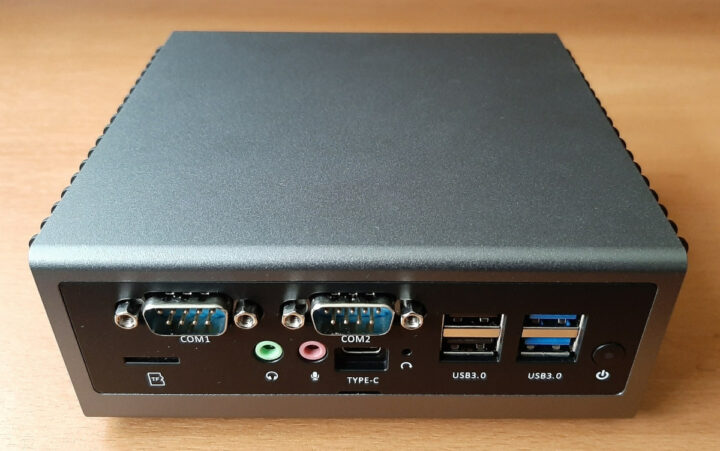
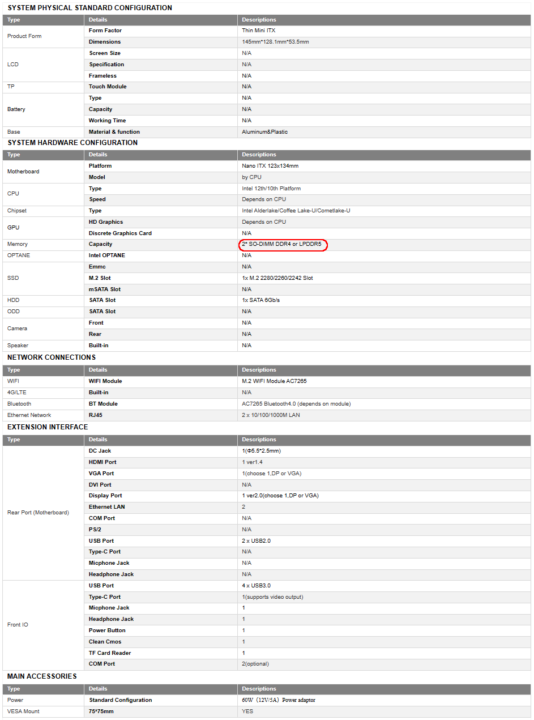
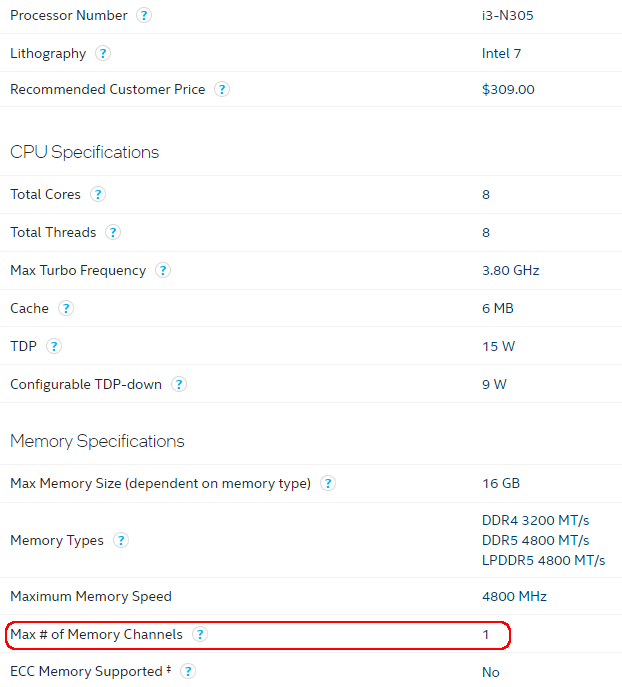
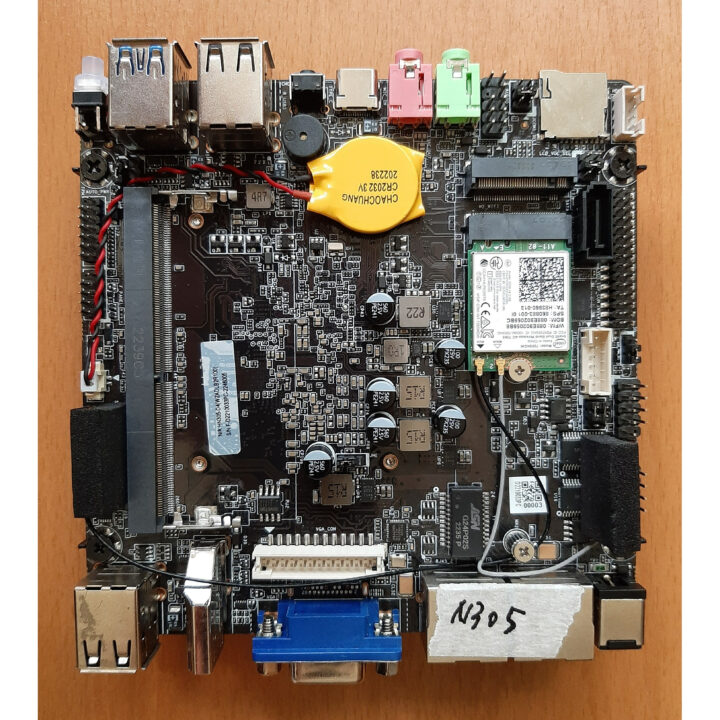
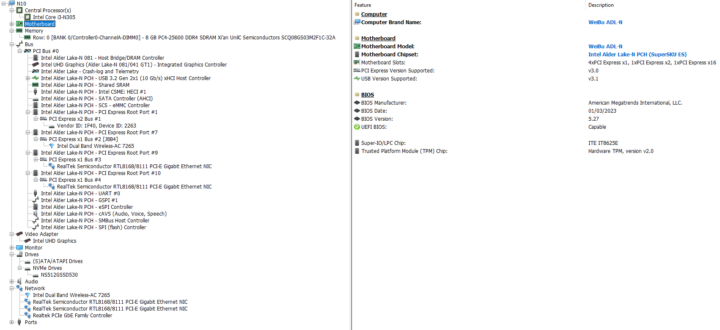

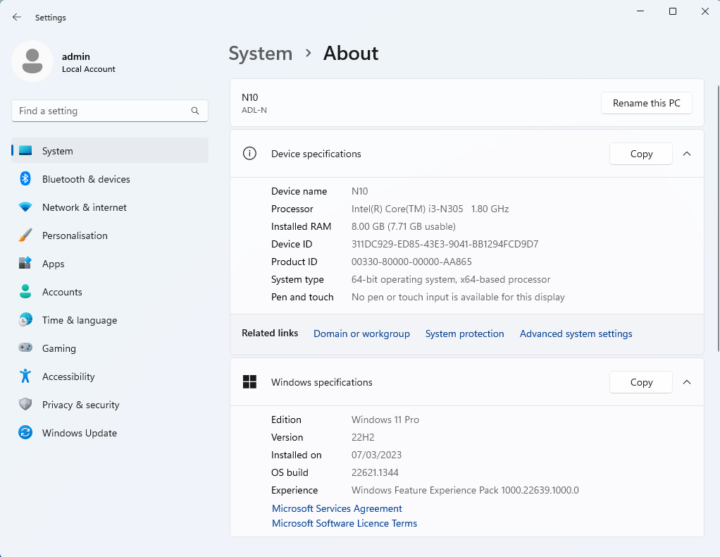
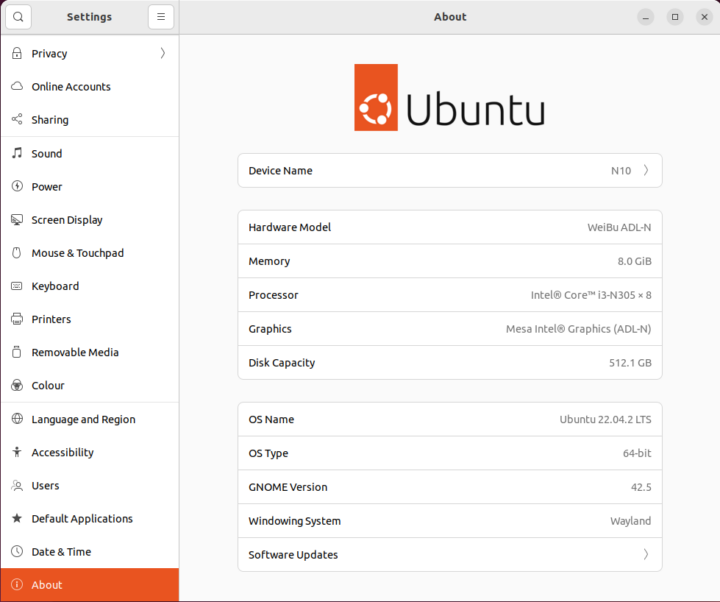
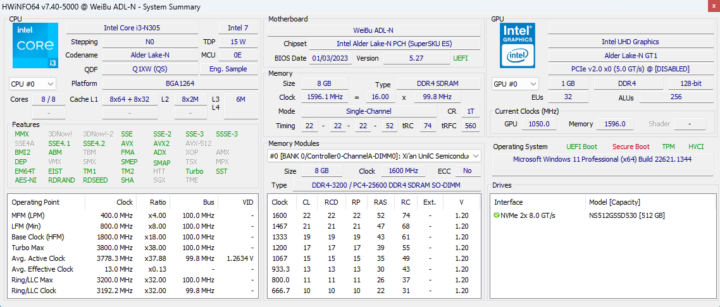
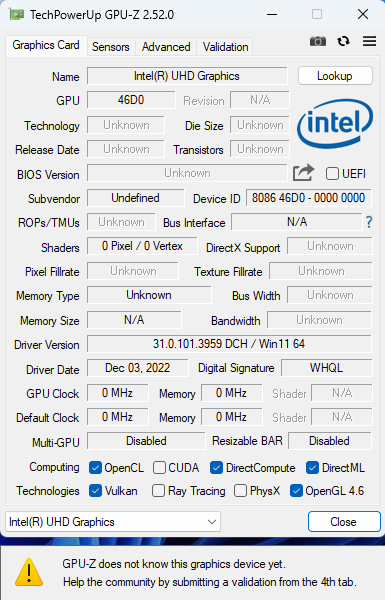
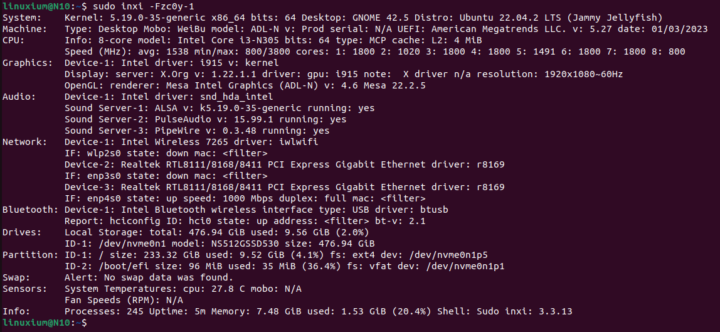
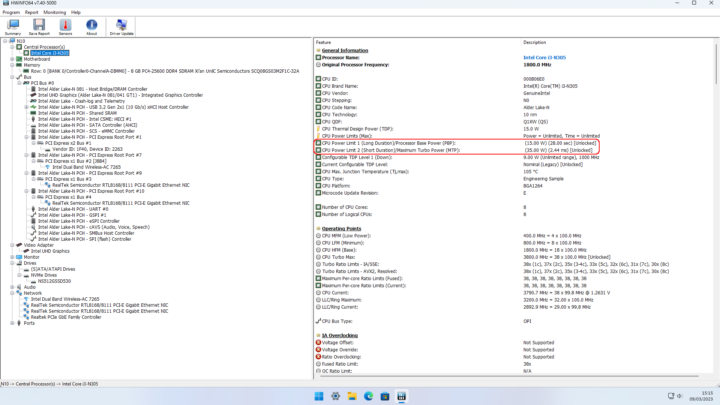
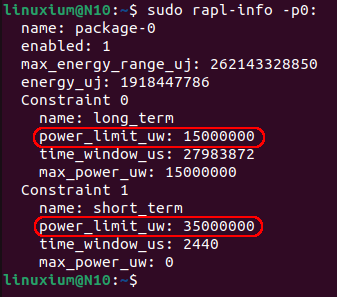
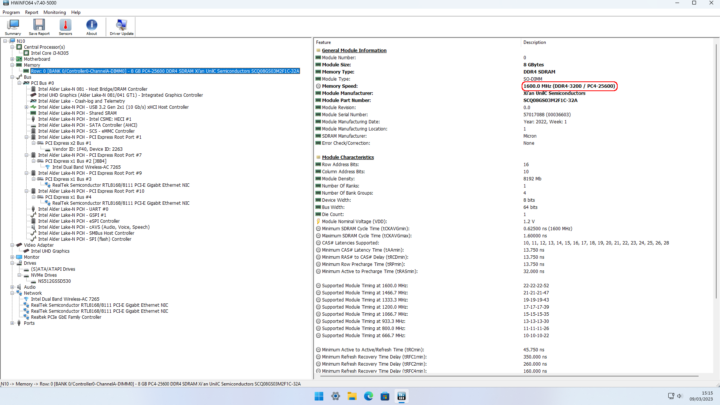
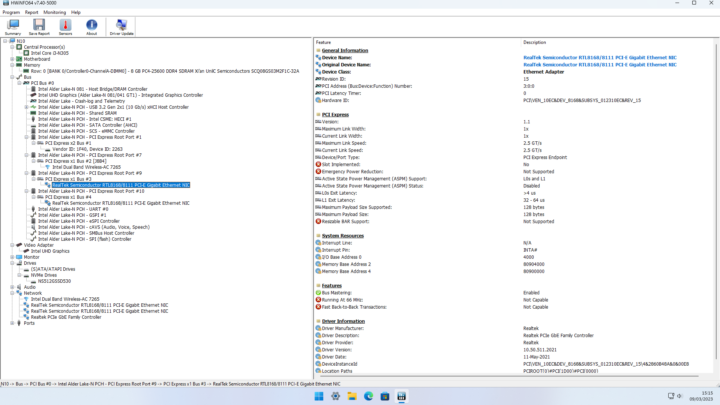
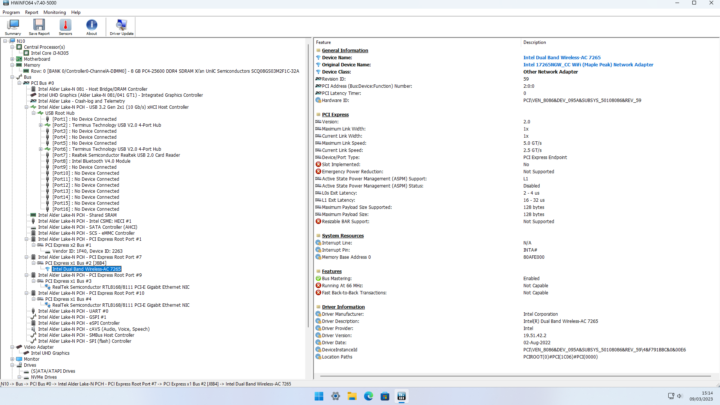
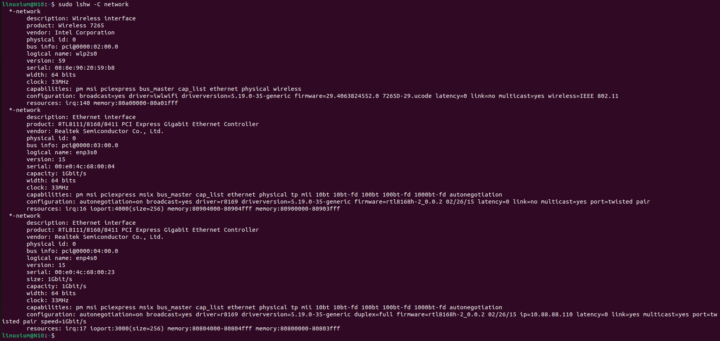
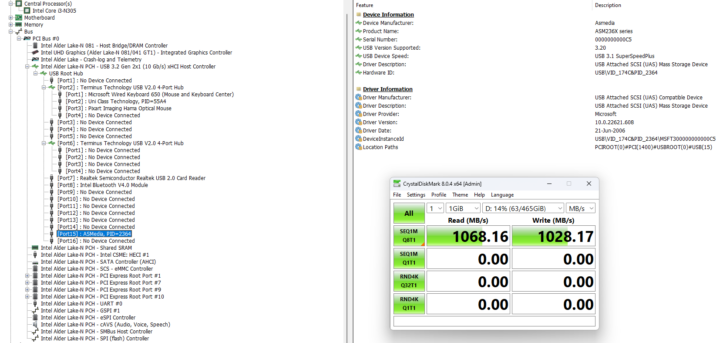
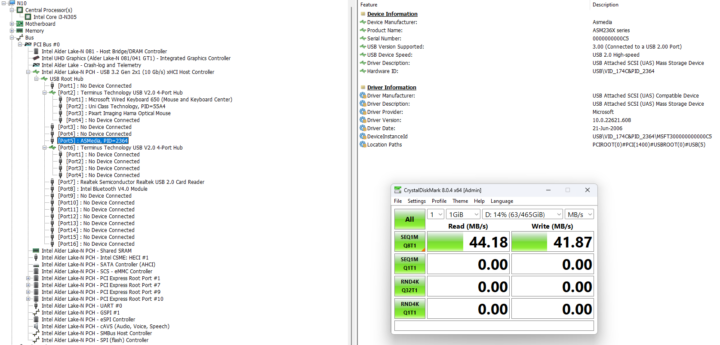
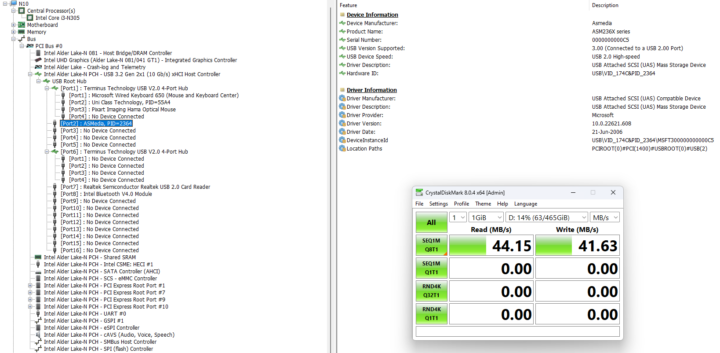
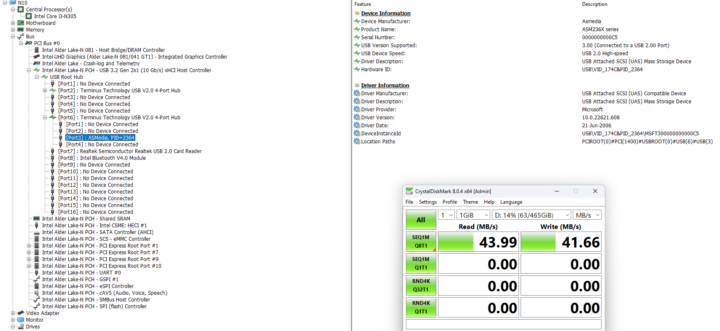
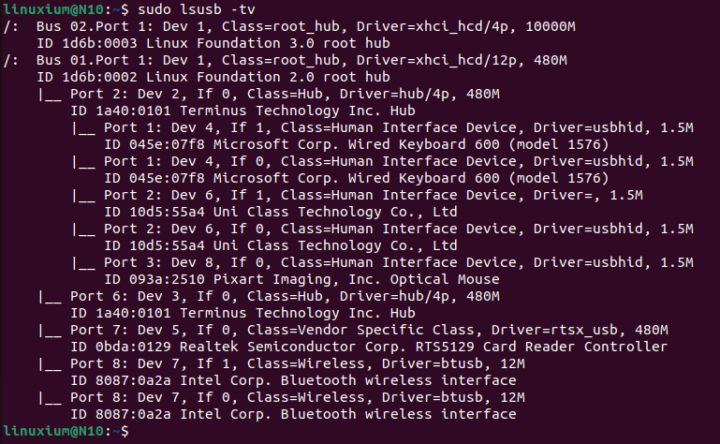

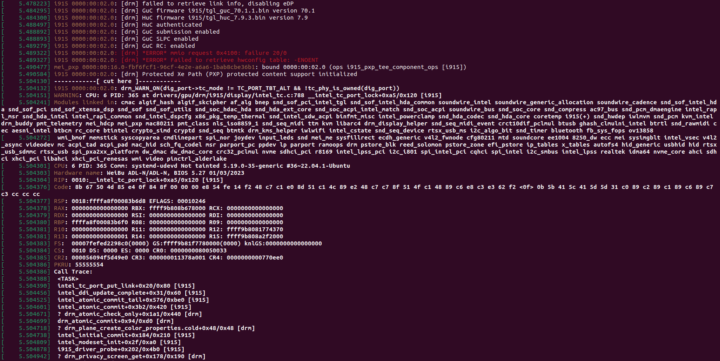
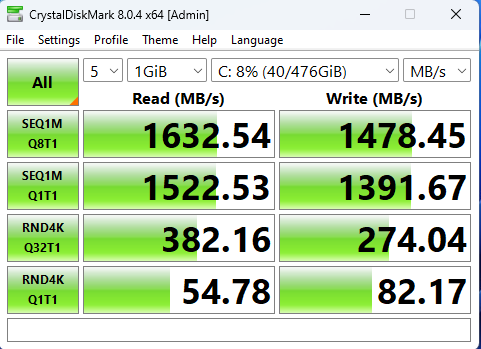
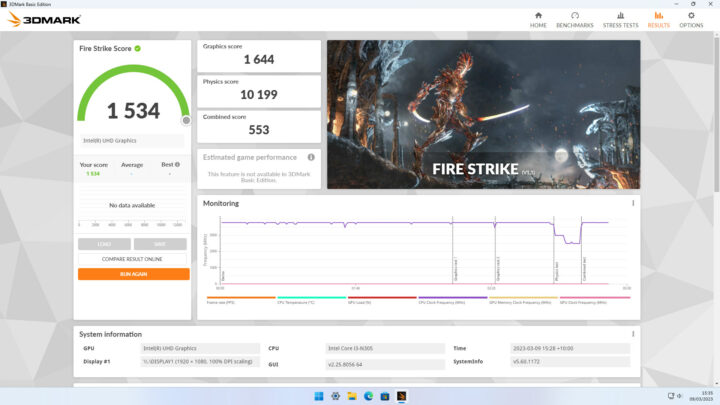
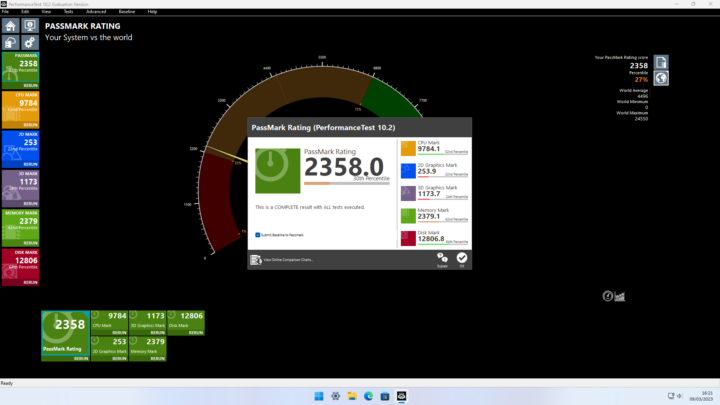
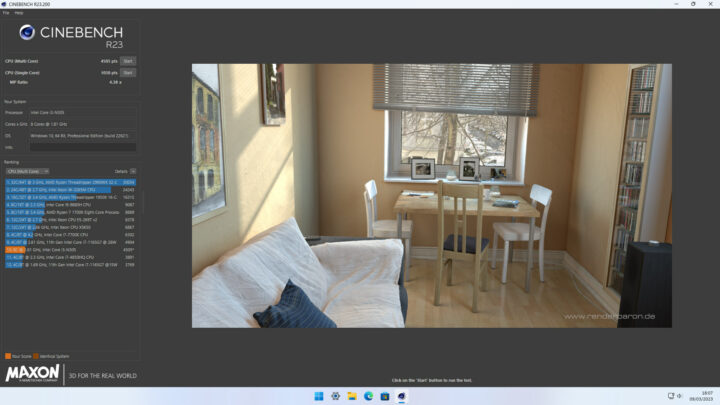
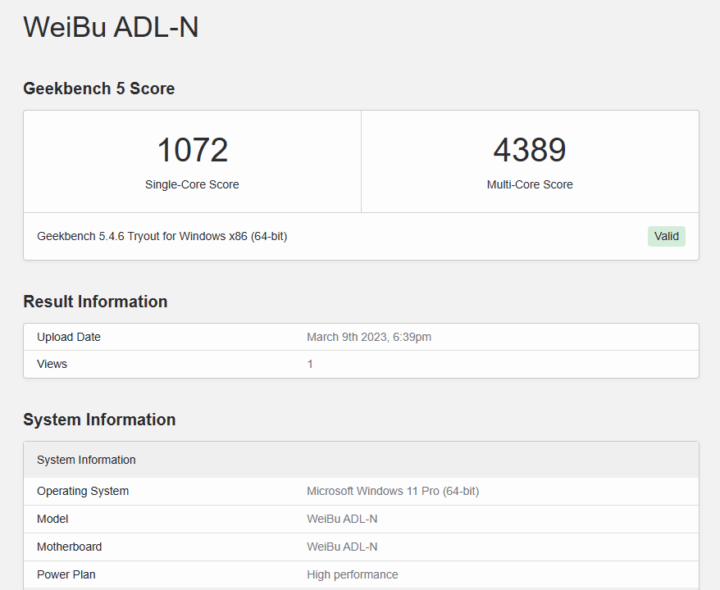
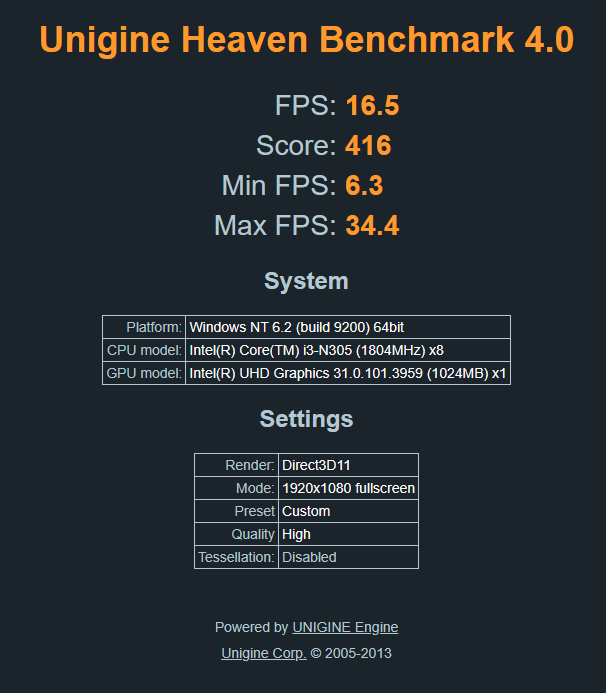

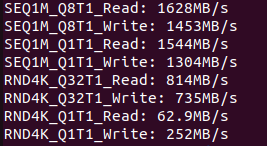
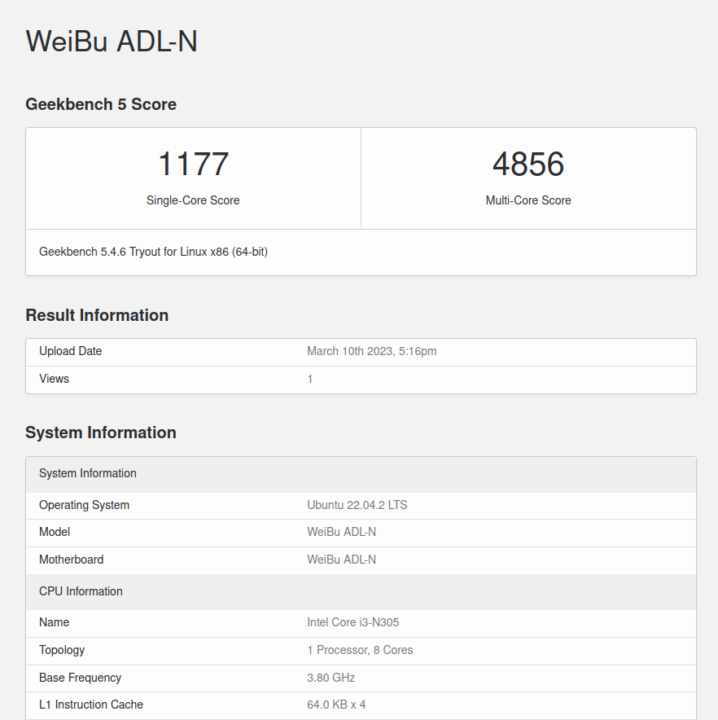
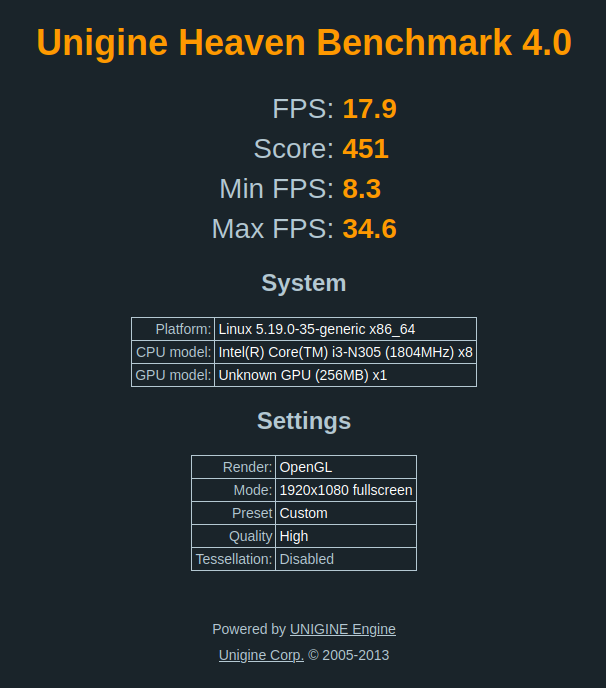
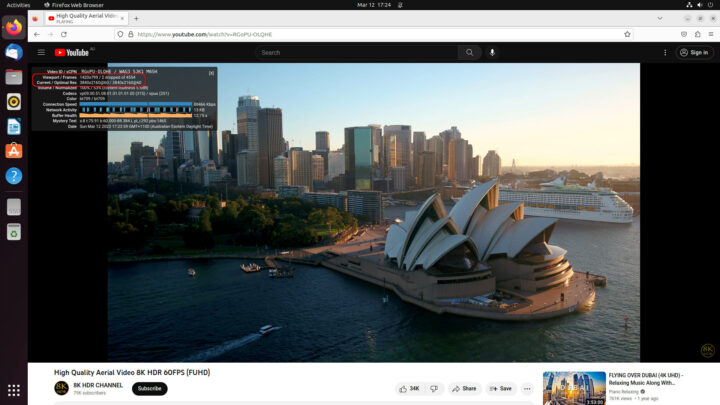
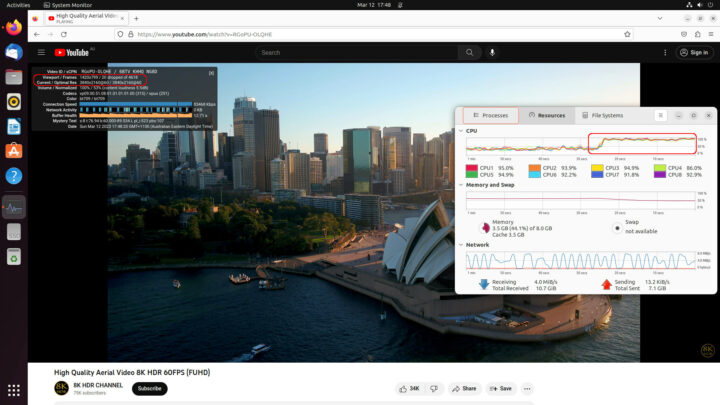
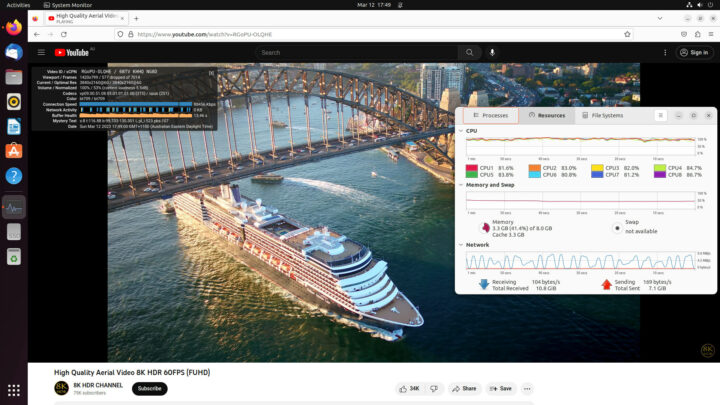

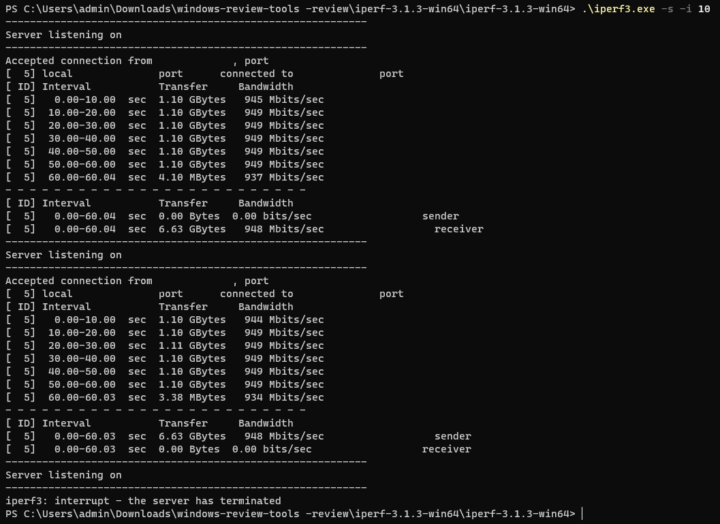
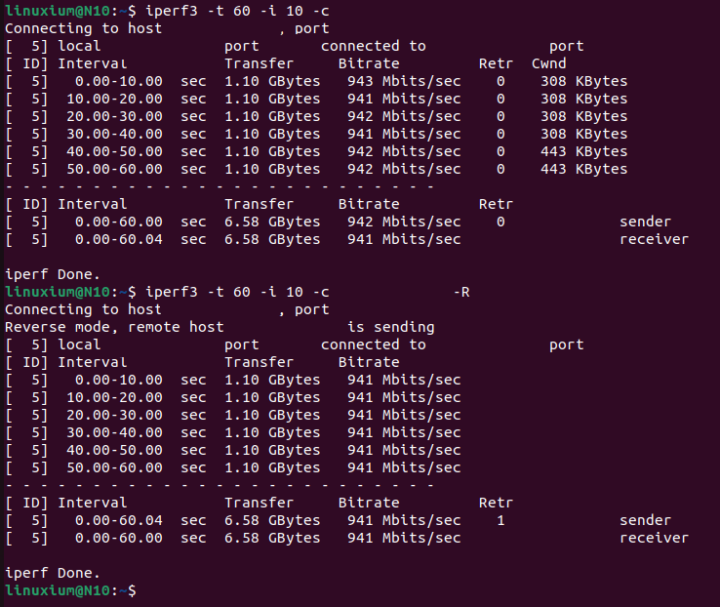
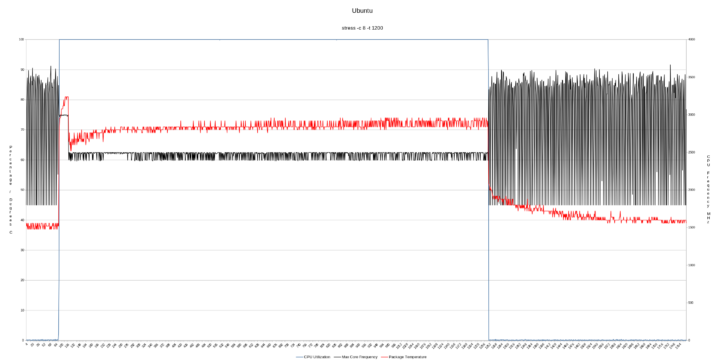
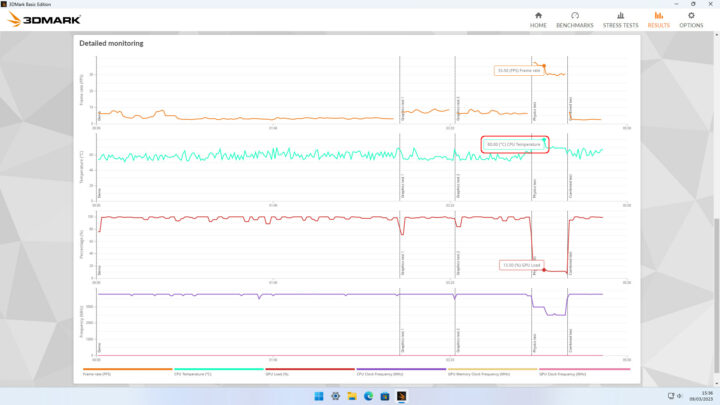
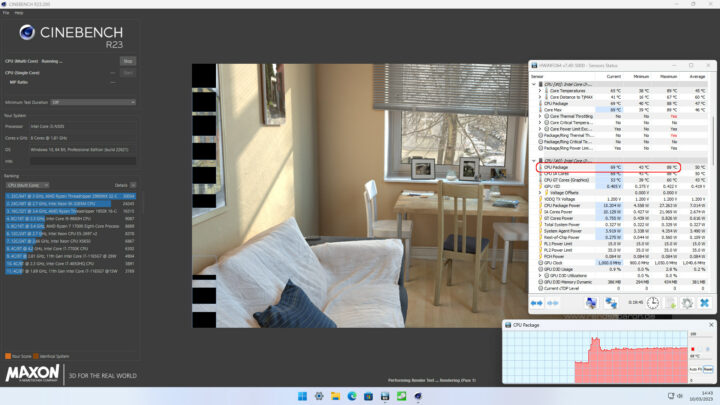
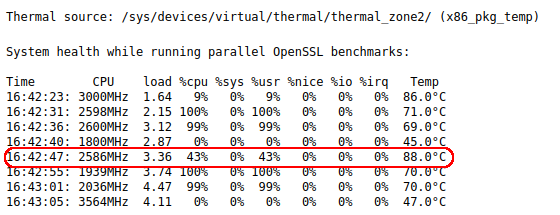



There is a difference between Single/Dual Channel memory and the number of slots.
Alder Lake N should support 2 modules, but without a speed benefit from using two separate memory channels.
Take a look at 99% of the desktop cpus, they support Dual Channel memory but run fine with 4 modules.
There is generally a bit of difference when you run dual rank memory to single rank(or in some cases quad rank when you have dual rank modules on all 4 slots), the memory controller can theoretically schedule operations in a better way. Say, give a refresh operation to one module while waiting for another to finish an operation or any other(not just refresh).
With that said, dual rank does put increased pressured on the memory controller, so you might not able to get as high clock in those as compared to single rank.
Certainly. But as:
it makes sense for the manufacturer to only equip the board with one slot therefore supported 4GB, 8GB or 16GB plus they make a small saving as a consequence.
Have you had the chance to try 32 GB RAM on that model? I can see some other Alder Lake-N hardware with single-channel DDR4 or DDR5 and up to 32GB listed in the specifications.
I thought I had a spare couple of 32 GB sticks but having searched everywhere I cannot locate them, so no, I haven’t tried increasing the memory past the prescribed limit.
The hardware can have some value, the problem is that they don’t want to sell, it’s impossible to find a public price.
Weibu is an OEM manufacturer as Ian wrote in 1st paragraph.
For me this was more an excellent look on Intel’s ‘most powerful’ Gracemont offer: the i3-N305 many think shouldn’t be called i3. And the importance of ‘Power Limits’ (PL) that directly affect benchmark scores but not so much real-world performance with typical Mini PC use cases (which is a lesson many of those trained to stare only at benchmark graphs still need to learn).
> Weibu is an OEM manufacturer as Ian wrote in 1st paragraph.
Yes but it doesn’t change anything. There are still hardware vendors who don’t understand that it’s engineers who start to look around for solutions to use in their products, and these ones have a limited budget, which means that anything that’s too expensive or which has no price is eliminated. We all know how we proceed in such situations: open 100 tabs on google searches and close all uninteresting ones. Given the wide price spectrum in the area of mini-PCs (from $100 to $800 basically) you don’t want to have to fill forms on web sites just to get a most likelky uninteresting price a few days later, and see your address being used for new product announcements every month.
> For me this was more an excellent look on Intel’s ‘most powerful’ Gracemont offer: the i3-N305 many think shouldn’t be called i3. And the importance of ‘Power Limits’ (PL) that directly affect benchmark scores but not so much real-world performance with typical Mini PC use cases (which is a lesson many of those trained to stare only at benchmark graphs still need to learn).
Indeed.
Idle wattage a little higher than I’d ideally want, but performance looks fine.
EU consumer electronics standards for power consumption when off state that the power demand should be a maximum of 0.3W, this mini PC is double that, standby should be limited to 0.5W too, so it’s no surprise idle is on the high side.
It’s really sad that Intel has limited ADL-N to just single channel. At high multithreads loaded, the lack of memory bandwidth will make a huge difference.
“Intel Core i3 N305”? What a weird name. Intel says “The Intel® Core™ i3 N-series processors follow the current N-Series naming convention which do not include any generation indicator in the number format.”. So what do the numbers mean? I think the “3” is there to indicate it’s an i3?
Oh, and https://en.wikipedia.org/wiki/Gracemont_(microarchitecture)#Alder_Lake-N shows this Intel Core i3 N305 is the same architecturs as Atom cpu’s?
> this Intel Core i3 N305 is the same architecturs as Atom cpu’s?
In some sense this thing consists only of ‘Atom cores’. And if it’s about Integer/memory performance there is not much difference compared to Tremont ‘Atom cores’ other than higher boost clocks but Gracemont got AVX, AVX2, FMA3 and AVX-VNNI instructions so software that detects them and use if available might perform twice as fast or even more.
Gracemont is a big change in architecture from Tremont and is 30% faster per clock.
> 30% faster per clock.
In which area?
I was talking about certain use cases (definitely not ‘gaming’ whatever that is) and if we focus on Integer/memory there’s almost no gain (or let’s better say the tiny gain is related to lower memory latency with Alder Lake now). You can compare i3-N305/N100 numbers with Tremont predecessors here for example. If software can make use of AVX, AVX2, FMA3 and AVX-VNNI it’s a different story ofc.
I don’t think anybody can say about the 300/305 part since there is no other generation to compare it to yet. We just know that the naming scheme is arbitrary and awful.
The i3 branding indicates that Intel believes this is a special, premium CPU compared to the other ones. It has the highest turbo clocks of the Alder Lake-N chips, the full 32 EU graphics, and most importantly, 8 cores. Previous Atom flagships had 4 cores. Certain applications and games/emulators will benefit greatly from having 8 cores, 8 threads.
Shame about the single-channel memory.
> Shame about the single-channel memory.
Though the i3-N305 here being on par / outperforming Jasper Lake N6000/N6005 SKUs equipped with 2 DIMMs with both memory latency and bandwidth. As for the i3 branding I really hope it’s not Intel believing something but their product marketing folks wanting consumers to believe something. 🙂
Looking forward to next N305 review for real consumption numbers since Ian was testing a ‘pre-production sample’.
Did your testing with the Jasper Lake CPUs ever show a noticable benefit with 2 vs 1 DIMMs?
I assumed it in the past, but couldn’t actually find much if any evidence for it.
> Did your testing with the Jasper Lake CPUs ever show a noticable benefit with 2 vs 1 DIMMs?
Nope, but that’s due to the small set of benchmarks sbc-bench is using being not affected by memory bandwidth: ix.io/4alp vs. ix.io/4g6h is N5105 with one vs. two 2933 MT/s LPDDR4 chips and only difference is a memory bandwidth drop of less than 10%. With some use cases a similar performance difference can be at least measured.
So while with Jasper and other Lakes there is a small difference in measured bandwidth comparing 1 vs. 2 memory channels on other platforms we can see a huge difference. See the two Phytium D2000 numbers in sbc-bench results collection for example. But you need a use case that’s affected by memory bandwidth (like video) for this to have a real effect.
Even on a single channel you can occasionally measure gains by interleaving DRAMs when the memory controller is smart enough to initiate parallel transfers because while one DRAM is transferring data the other is prefetching next ones. This brings nothing on linear transfers (e.g. large memcpy/memset/memchr) since a single DRAM can also fill the channel’s bandwidth there. It does help on independent transfers that are lucky enough to require access to the other RAM, i.e. that’s easier to face with dual-core operation where it could theoretically increase the BW by up to ~50%. But sometimes plugging two DRAMs on the same channel also imply to lower their operating frequency and immediately affects visible performance.
> But sometimes plugging two DRAMs on the same channel also imply to lower their operating frequency and immediately affects visible performance.
Adding to this the memory controller obviously is important (and the thing inside those *Lake SoCs behaves differently compared to e.g. a Xeon) and sometimes (often?) there’s a trade-off between bandwidth and latency as well (latency being lower in dual-channel mode).
> latency being lower in dual-channel mode
BS, higher of course.
I didn’t test Jasper Lake CPUs but I did look at 2 vs 1 DIMM and also the effect of single-rank vs dual-rank which benefited AMD processors rather than Intel ones (link)
I think the Intel CPUs gaming performance not being affected by 1 vs 2 DIMMs (in that test) has mostly to do with the iGPU being so much weaker + having shared L3 cache.
N305 has 32EU at 1.25 ghz, so 600-700 gflops? (fp32) Doubt your test would show a benefit, especially with the bandwidth ddr5 provides.
I’ve seen gaming tests and despite having single channel it can often outperform Tremont significantly because the CPU is much, much faster. 30% per clock + clock increase results in 50% faster single thread performance.
The GPU itself is too anemic and in certain configurations with DDR5 it’s not really losing to dual channel Tremont setups.
10 and 12 Watt in idle? This must be a bios problem and should be fixable… the question is when or if ever.
As long as it’s not 4-5 Watt I’m gonna wait or buy a mini pc with i3 1215u instead.
So lets wait for intel NUC 13
For official support.
Linuxium, can you plz make some pictures of CPU soc
how big it is
thx
Here is a picture of the processor: https://imgur.com/DYstlh6
Looking at the SOC, it measures (w x h) 24 x 35mm, iGPU 9 x 6mm and CPU 11 x 9mm
It also seems ‘scratched’ as those marks are not lint etc and cannot be removed.